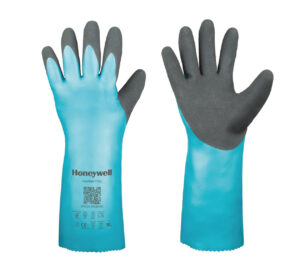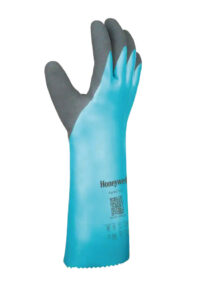Focus on Safety Drives Innovation in Chemical-Resistant PPE
Worker health and safety is a large priority for employers, and it is not just for compliance reasons. Companies realize that investing in human capital enhances long-term business performance; mitigates workers’ risk from dangerous situations; and creates value for employees.
One of the leading causes of work-related injuries is exposure to dangerous chemicals. Workers can come into contact with tens of thousands of chemicals every day, with many presumed to be harmful, and only a small number regulated to be handled in the workplace. According to the Occupational Safety and Health Administration (OSHA), American workers suffer more than 190,000 illnesses and 50,000 deaths annually related to chemical exposures.
Protect with PPE
Personal protective equipment (PPE) can protect against chemical exposure for workers. Some of the biggest users of chemical-resistant PPE are those working for industrial companies in automotive and chemical manufacturing, oil and gas, food processing and metal fabrication. Employers should take the time to evaluate their PPE to ensure it properly protects employees from chemical hazards at their work sites.

Chemical-resistant gloves are crucial within all industries and workplaces that handle hazardous substances. (photo courtesy Honeywell)
In particular, there is a great need for proper hand protection. Hands can be a workers’ most valuable tool, so using the right protection is vital to employees’ livelihood and to companies’ success.
Chemical-resistant gloves are crucial within all industries and workplaces that handle hazardous substances, not only due to the wide range of chemicals, but also because of cut and puncture risks. Many chemical-resistant gloves are thick and slippery, leading to poor dexterity, hand fatigue and discomfort, which presents a risk for workers’ safety, productivity and job satisfaction.
Hand protection solutions that provide the following are ideal.
- High chemical protection: First and foremost, the protective barriers should shield hands against chemicals, irritants or other potentially hazardous materials.
- Reliable cut resistance: It is not uncommon for workers who come into contact with hazardous chemicals to also work with sharp knives or machinery. Employees working with hazardous chemicals should look for gloves that provide protection against lacerations as well.
- Enhanced wet and dry grip: Whether working in wet or dry environments, workers should opt for chemical-resistant gloves with enhanced grip to reduce the effort needed to hold and handle tools—minimizing hand fatigue and increasing worker productivity.
- Improved dexterity: When working in chemical environments or when extensive use over long periods of time is required, good dexterity is necessary to enable workers to get their jobs done efficiently. Gloves that are not too thick and allow for a broad range of motion increase the ease of movement for workers performing tasks.
- Heightened comfort: A common issue workers face when wearing PPE is discomfort after continuous use, either from the gear being stiff or non-breathable. For chemical-resistant gloves, employers should look for options that incorporate ergonomic designs for hand support and moisture dispersion technology for sweat management—to help workers’ hands stay dry and comfortable.
High Tech Meets Enhanced Safety

Some manufacturers put scannable QR codes directly on PPE to give users easy access to information at their fingertips, such as product specifications—including chemical data, coating and lining materials—as well as instructions for use. (photo courtesy Honeywell)
New versions of chemical-resistant PPE incorporate innovations in design to make them safer, more comfortable and versatile—and now smarter, too. Some manufacturers are putting scannable QR codes directly on PPE to give users easy access to information at their fingertips, such as product specifications—including chemical data, coating and lining materials—as well as instructions for use. By making this information readily available to workers, they can help ensure they are using the right product for the task at hand.
Of course, gloves are not the only type of PPE needed when handling dangerous chemicals. Depending on the type of work, workers may also need to wear protective suits, coveralls, hoods, gowns, overshoes and air-filtering systems. When choosing chemical-resistant clothing and hand protection, it is important to make sure the PPE is resistant to the specific chemicals workers will encounter and that they are highly durable. Chemical-resistant PPE is subject to harsh conditions, so choosing equipment that is able to withstand repeated exposure to chemicals is necessary.
In recent years, there has been increased awareness of the importance of workplace health and safety, and companies are feeling pressure from their employees, customers and other stakeholders to improve their practices—including providing effective PPE. Overall, innovations in PPE’s design make it more. effective and comfortable, while also improving worker safety and reducing the cost of ownership. Investing in occupational safety and health mitigates risk, increases productivity and, ultimately, enhances company performance.
Omar Vikin is General Manager of High Risk Personal Protective Equipment at Honeywell.
Share on Socials!
Fixed Gas Detection: Issues and Answers
Listen Up! A note from NHCA
The “New Asbestos:” Protect Workers from Silica Dust
Leaders in Industrial Hygiene
Council for Accreditation in Occupational Hearing Conservation (CAOHC)
Subscribe!
Sign up to receive our industry publications for FREE!










